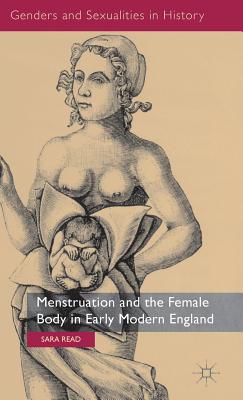 A noteworthy addition to the menstrual canon was published last year by Sara Read, a professor in the Department of English and Drama at Loughborough University in England, titled Menstruation and the Female Body in Early Modern England (Palgrave Macmillan). As the title suggests, the book delves into the menstrual ecology of 16th and 17th Century England in order to discover the nature of attitudes and practices of the time. Given the fact that the prejudices, myths, taboos, and emphasis on discretion and even secrecy were present as they are today (though sometimes taking different forms), it is a daunting challenge to unearth evidence of how the menstrual cycle was viewed centuries in the past. However, despite the secrecy surrounding the topic, Read has unearthed nearly 150 primary sources ranging from journals, sermons and letters to midwife instructional manuals which she subjects to close analysis assisted by more than 100 secondary scholarly references. In doing so she has revealed a complex set of social practices and has critiqued them with insight.
A noteworthy addition to the menstrual canon was published last year by Sara Read, a professor in the Department of English and Drama at Loughborough University in England, titled Menstruation and the Female Body in Early Modern England (Palgrave Macmillan). As the title suggests, the book delves into the menstrual ecology of 16th and 17th Century England in order to discover the nature of attitudes and practices of the time. Given the fact that the prejudices, myths, taboos, and emphasis on discretion and even secrecy were present as they are today (though sometimes taking different forms), it is a daunting challenge to unearth evidence of how the menstrual cycle was viewed centuries in the past. However, despite the secrecy surrounding the topic, Read has unearthed nearly 150 primary sources ranging from journals, sermons and letters to midwife instructional manuals which she subjects to close analysis assisted by more than 100 secondary scholarly references. In doing so she has revealed a complex set of social practices and has critiqued them with insight.
There is a striking symmetry between Sara Read’s documentation of Early Modern menstruation and Lauren Rosewarne’s Periods in Pop Culture (Lexington Books) published the previous year. Though they examine eras separated by 400 to 500 years of history and vast changes in practices and attitudes, their projects compliment each other in surprisingly felicitous ways. Both authors capture the nuances of the subject in their respective realms and invite readers to think more deeply about how menstrual values are formed.
Following the publication of Read’s book, she is one of the organizers of a conference in July at her home university titled “Early Modern Women, Religion, and the Body” that will include several presentations with menstrual themes, including my own paper titled, “The Early Modern ‘Period’ and Biblical Stories of Menstruating Women.” A report on the conference will be posted after its completion.

